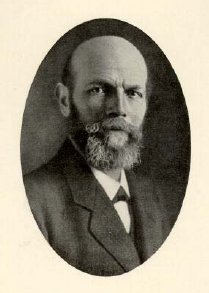

The long-awaited special issue of Medicine & Biology Engineering & Computing has finally arrived. The contents page can be viewed by clicking here [Contents]. Even a quick perusal of its content will tell you that this is essential reading for anyone interested in both wave intensity and impedance analysis of arterial waveforms.
If you need more convincing, the editorial accompanying the issue is available for free by clicking here [Editorial]. It provides an overview of the contents and a concise description why analysis of the arterial waveforms is important.
A short history of arterial mechanics that I contributed to the issue has also been made available on open access [A Brief History of Arterial Mechanics].
Origin of this web page
As a contributor to the issue I am naturally biased, but I think that this collection of papers describing the current state of the art of arterial waveform analysis will become a benchmark in the development of the subject. I recommend it very highly to anyone interested in wave intensity analysis.
The origin of these web pages is tied to this special issue. I was asked by the editor, Prof. Jos Spaan, to contribute an introduction to wave intensity analysis several years ago when the idea of the special issue was first taking root. I accepted the invitation and wrote the article with probably too much enthusiasm and certainly too many words. I was told that I would have to cut my draft to approximately one third for it to be publishable. I could see the editor's point but was loath to discard so much of the work that I had put into the original draft. That is when I conceived of these pages. The web is infinitely more extensible than the printed word and so I adapted my introduction to this web site. Of course, the difference in formats introduced a lot of new possibilities and I have tried to make the web site more interactive and the introductory chapter more literary. I hope I succeeded.
A brief history of arterial mechanics (addenda)
The editor also asked me to contribute this article which was the motivation for a lot of very interesting work digging through the past. I wish that I could say that I had consulted all of the original papers on arterial mechanics, but unfortunately many of them were inaccessible to me either physically or because of my very limited language skills. The results of my research into the history of my subject was fascinating and I hope that I was able to make it interesting to the reader. Inevitably, there are a few errors and omissions that I was unable to correct or include before the issue went to press. I plan to include some pages on history on this web site as an update to my article.

The major omission was Johannes von Kries (1853-1928). Just before publication one of the editors of the special issue drew my attention to a paper A preuresor in waterhammer analysis - rediscovering Johannes von Kries (2007) J. Hydr. Engng. 133, 1-8. In 1888, von Kries published a paper giving a theoretical derivation and describing experimental results for the waterhammer equation, which plays a very important role in wave intensity analysis, 10 years before the publication of the paper by Joukowsky which is commonly cited as the origin of the equation. Interestingly, and embarrassingly for someone interested in the arterial pulse, the authors of the J. Hydr. Engng. paper suggest that von Kries' work escaped the attention of the hydraulogy community because he worked in the area of 'blood flow'. In fact, von Kries' 1888 paper was expanded and elaborated in a book that he published in 1892 entitled Studien zur Pulslehrer (Studies of the Pulse). I cannot explain how I missed this book and von Kries' contributions to arterial mechanics in the writing of my article.
Another colleague, Dr. Natalya Kizilova, who is also interested in the history of our subject and has the distinct advantage of knowing Russian (amongst other languages), has provided me with much interesting information about the history of arterial mechanics in Russia. She has pointed out that Euler's 1775 letter Principia pro motu sanguinis per arterias determinando, is fully available not a fragment as I said in my article. It seems that the editor of the 1862 collection of Euler's work catalogued the papers that were collected from Euler's study upon his death. Amongst these papers were the 'missing' parts of the 1775 letter. The editor of the 1955 edition of Euler's Opera Posthuma did not realise that the complete letter was available in the previous collection of Euler's work and republished the fragment. In its fragmented or complete form, Euler's letter is a remarkable historical document. He presents the basic equations for 1-D flow in an elastic artery with clarity and insight. Because his letter did not receive wide distribution, other works laboured for more than 100 years before his original results were rediscovered.